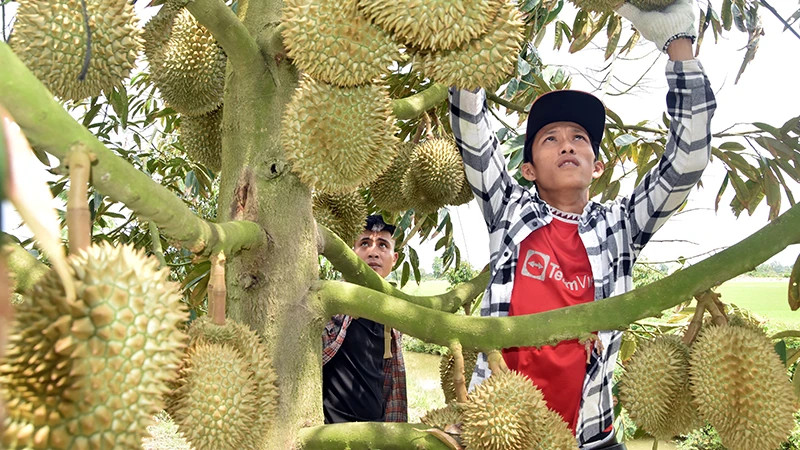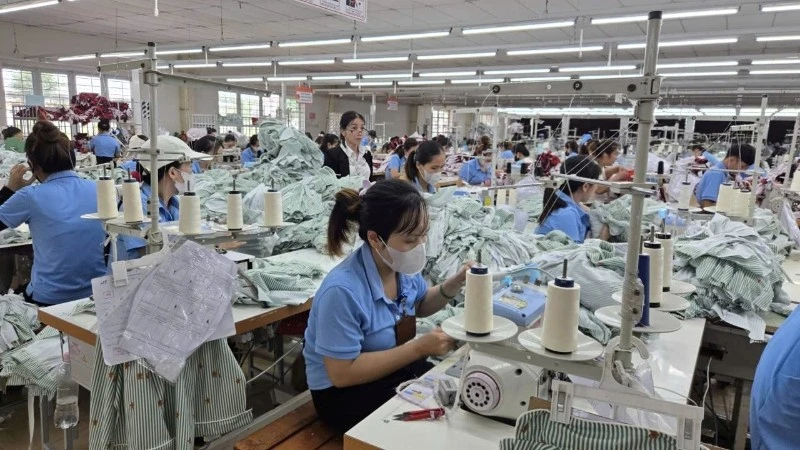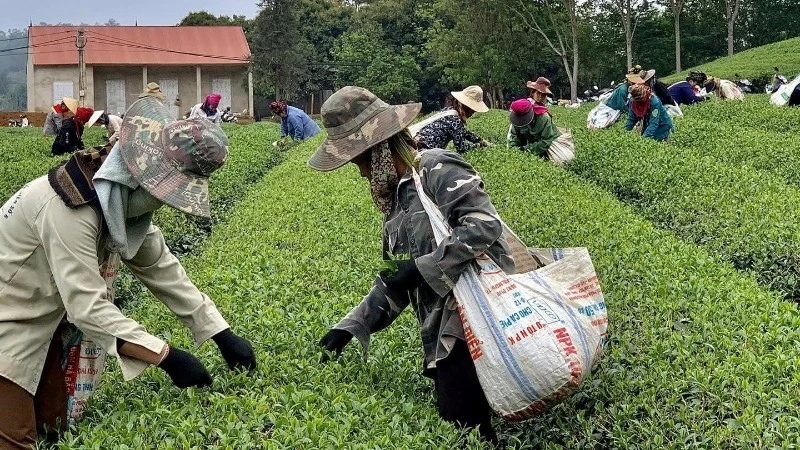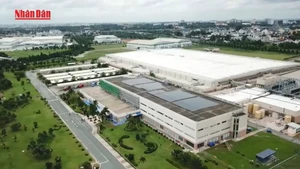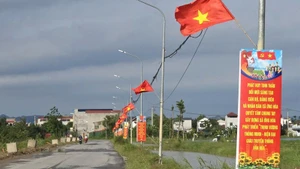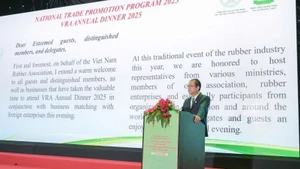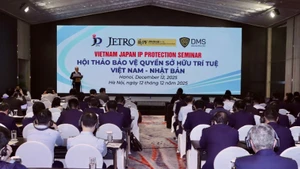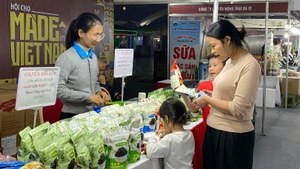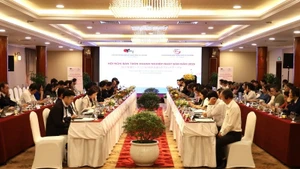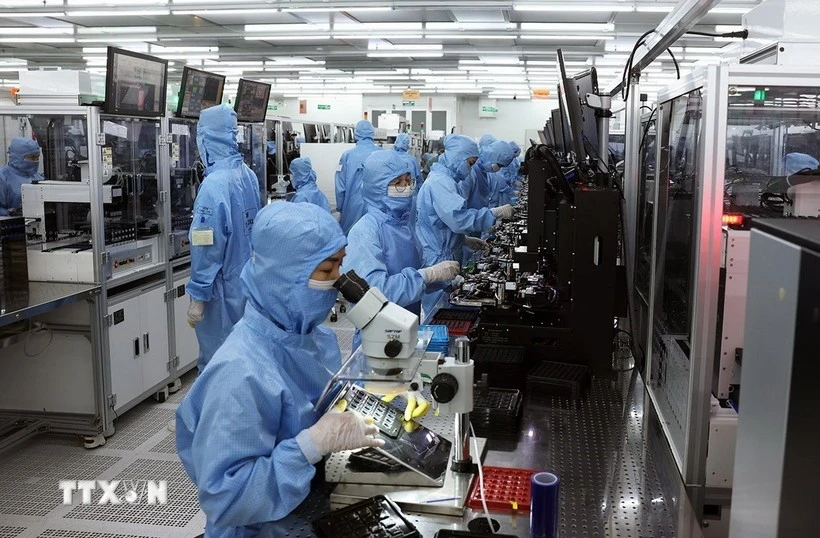After proactive efforts from relevant authorities, durian cultivation and processing for export in Tien Giang Province have undergone positive changes, with stricter implementation of procedures to meet partner requirements.
Transformations at the farm level
Having just sold 0.8 ha of Monthong durian (a Thai variety), totaling seven tonnes at 90,000 VND per kg (for bulk sale), Nguyen Thi Hoa, a farmer in My Thanh Bac Commune, Cai Lay District, happily shared: “When our durian fruits reached around 1 kg each, market prices dropped sharply, and export became challenging due to strict controls on yellow O (Basic Yellow 2) chemicals and cadmium contamination by importing countries. My family was very worried because we had invested billions of VND in this orchard, and this was our first fruiting season.”
To address these concerns, Hoa invited agricultural technicians and suppliers of farming materials to jointly inspect the entire cultivation process and the quality of each product used. After a thorough review, all aspects were confirmed to meet standards.
To ensure safety, 20 days before harvest, Hoa’s family collected durian samples for cadmium testing. The results showed no cadmium contamination, allowing them to proceed with selling to an export company. Additionally, every detail - from the fertilisers and pesticides used to spraying schedules and dosages - was meticulously recorded in a farming journal for easy traceability.
Thanks to stringent farming practices to meet export standards, Hoa’s durian was purchased at 5,000–10,000 VND/kg higher than the market price. After deducting costs from fruit care to harvest, her family made a profit of approximately 300 million VND - a significant amount at this time.
For nearly three months, stricter production management has not only applied to durian farmers, but also to buyers, who now conduct rigorous checks on each durian before purchasing for export.
Under contractual agreements, businesses have set strict requirements for farmers if the harvested durians do not meet the required ripeness and sweetness, or have pesticide residues or pest infestations, the harvest must be delayed until all standards specified in the contract are met.
Vo Thai Hoa, a representative of VH durian trading company in Tam Binh Commune, Cai Lay District, which exports durian from My Thanh Bac Commune, Cai Lay District, shared: “Our company has been exporting durian to the Chinese market for years. Previously, our partners provided favourable conditions for exports. When demand surged, we could even request early harvesting to meet volume requirements, using ripening agents to ensure timely delivery. However, recently, importers have tightened controls on yellow O chemicals and cadmium in durians. Therefore, we have also strengthened our quality control to comply with partner requirements.”
The mindset shift from cultivation to export processing - focusing on safety standards - is being systematically implemented. This approach will enhance the value and sustainability of Vietnam’s agriculture sector.
Strengthening management
Tien Giang Province has over 24,500 ha of durian plantations, yielding approximately 458,000 tonnes. The province has been granted 155 plantation codes covering nearly 7,000 ha and 66 packaging facility codes for exporting durians to China. In 2024, Tien Giang’s durian export revenue reached 93.38 million USD.
Following importers’ warnings about certain plantation and packaging codes in Tien Giang, failing to meet standards, the Ministry of Agriculture and Environment directly engaged with provincial leaders to analyse causes and devise solutions.
In response, the Tien Giang Provincial People’s Committee established two interdisciplinary teams to conduct regular and surprise inspections of packaging facilities and durian trading businesses. Initial results showed that most businesses were complying well and meeting export requirements.
Additionally, provincial leaders instructed specialised agencies to visit durian farms for direct inspections, collecting soil, fertiliser, and pesticide samples for testing. The Tien Giang Department of Crop Production and Plant Protection also organised training sessions for durian farmers, covering plantation regulations, packaging facility standards, food safety measures, and export market requirements.
Vo Van Men, Director of the Tien Giang Department of Crop Production and Plant Protection, stated: “To date, there have been significant improvements in durian cultivation and processing for export. Farmers are gradually adapting to safe farming practices that meet export standards, while purchasing businesses focus more on compliance with import requirements.”
Moving forward, the Tien Giang agricultural sector will continue collaborating with law enforcement, market regulators, and local authorities to monitor certified plantation areas and registered export packaging facilities. This effort will ensure that durians and other fruits are produced following safe agricultural practices, to meet the quality demands of importing countries. Ultimately, this will enhance the reputation and market value of Tien Giang’s agricultural products, benefiting both the province and Vietnam.
According to Vo Van Men, the province has also proposed that national authorities provide feedback on exported shipments, detailing plantation codes, involved businesses, and export volumes. This will help local agencies cross-check production data, ensuring strict management and preventing fraud in plantation codes, which could harm diligent farmers.
